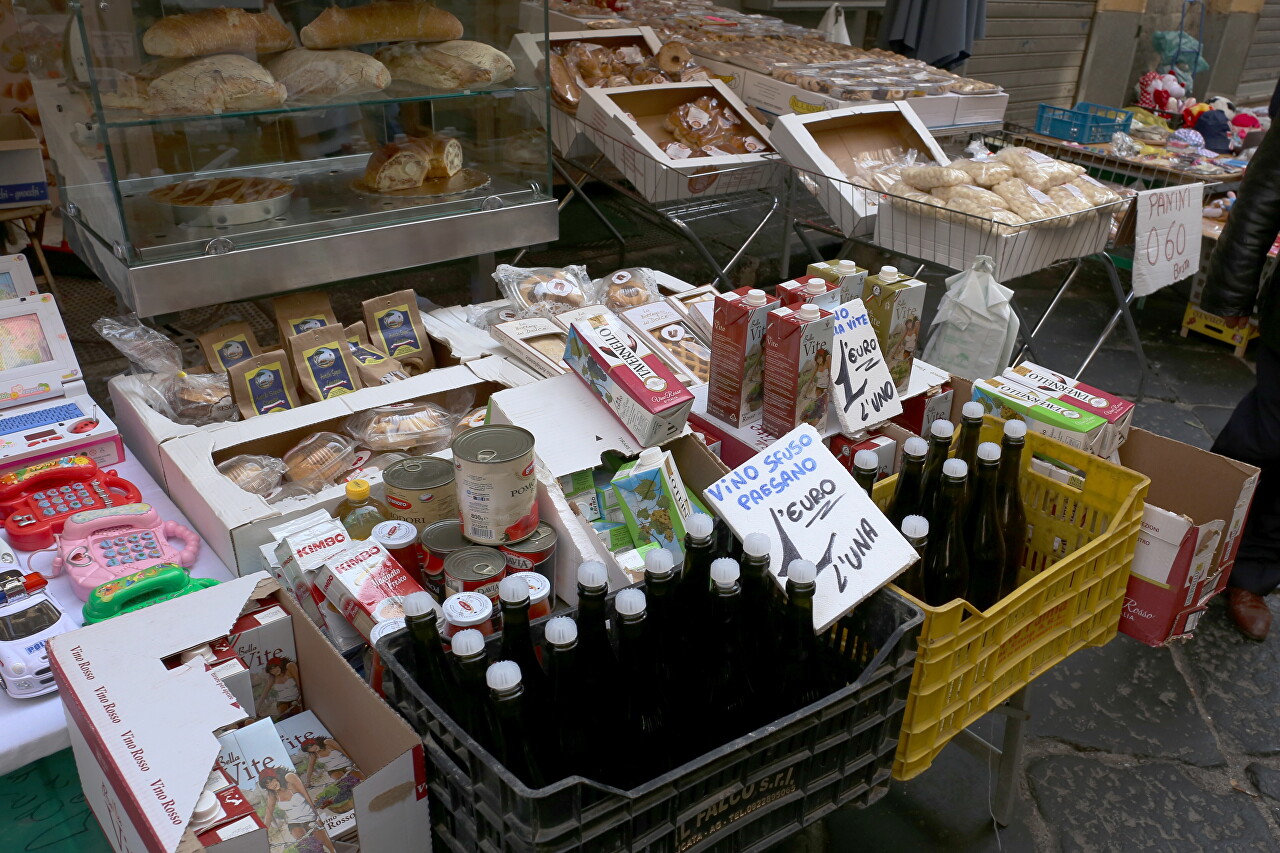Fish Market
When I arrived from Ischia at the ferry port of Naples, I went to the apartment where I had stayed for a week before leaving for Ischia. The train to Rome was still a couple of hours away, and I'd arranged with the hostess to leave my backpack for that time. Although the hospitable Tatiana gave me a private room with the opportunity to relax before the road, I went for a run through the fish market located nearby.
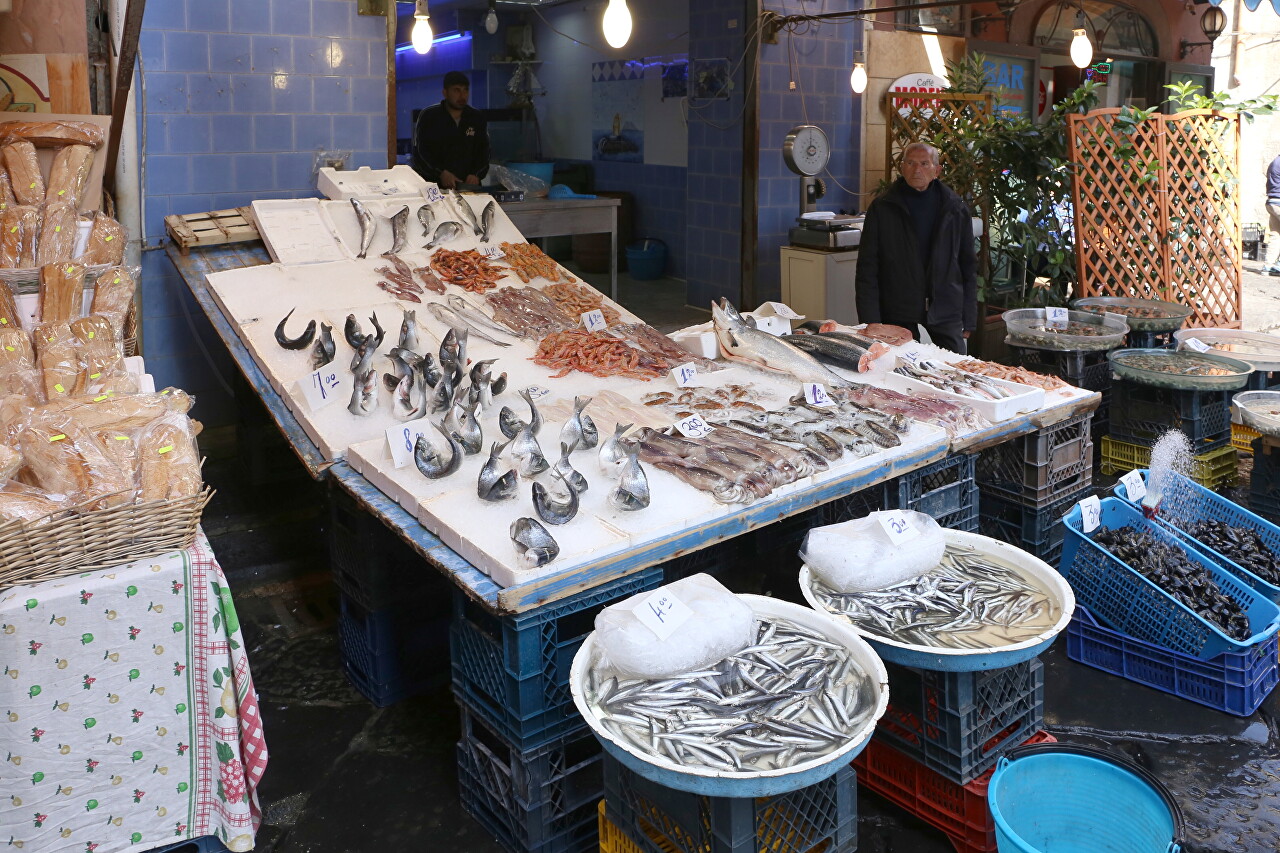
Fresh fish, seafood and fruit are sold on Via Cesare Carmignano, which runs from the Nolan Gate towards the port. During my week of living in Naples, I never got to see this colorful place, running through it early in the morning, when the merchants were just starting to open their stalls, and returning already in the dark.
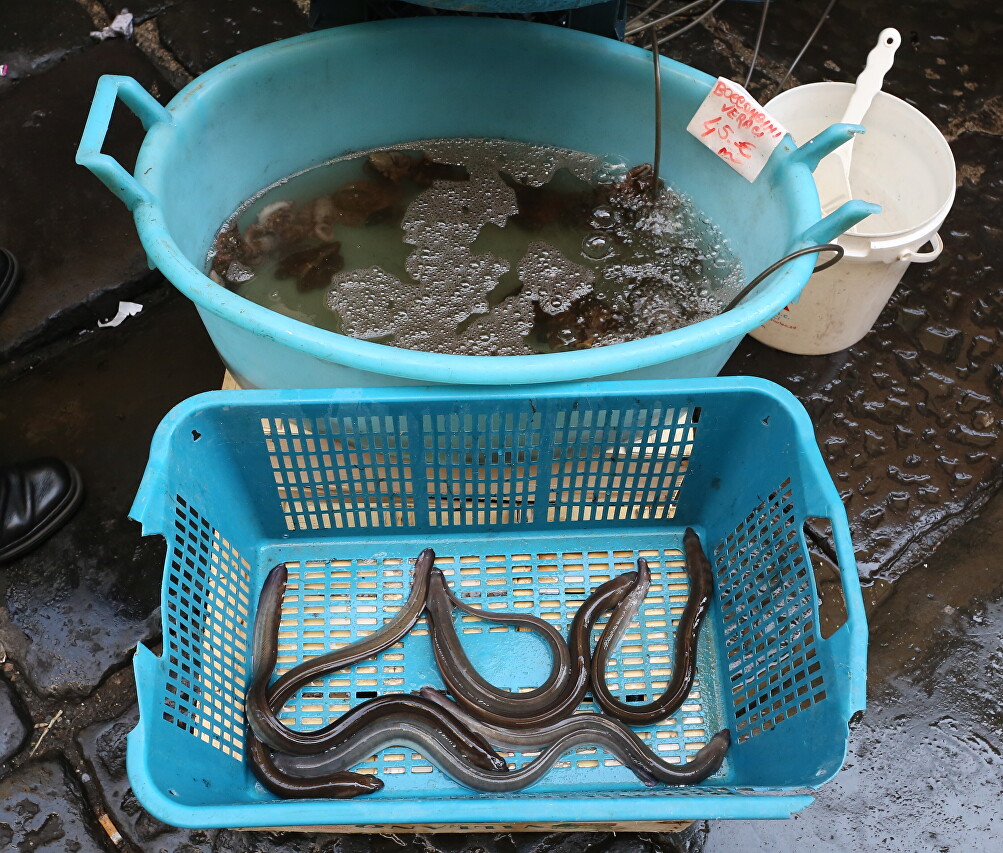
The morning catch of local fishermen is delivered here directly from the port, so already at 9 o'clock there are many buyers. Trading begins to wind down in the afternoon and by three o'clock in the afternoon the street is empty. Today was Sunday, the busiest day in the market.
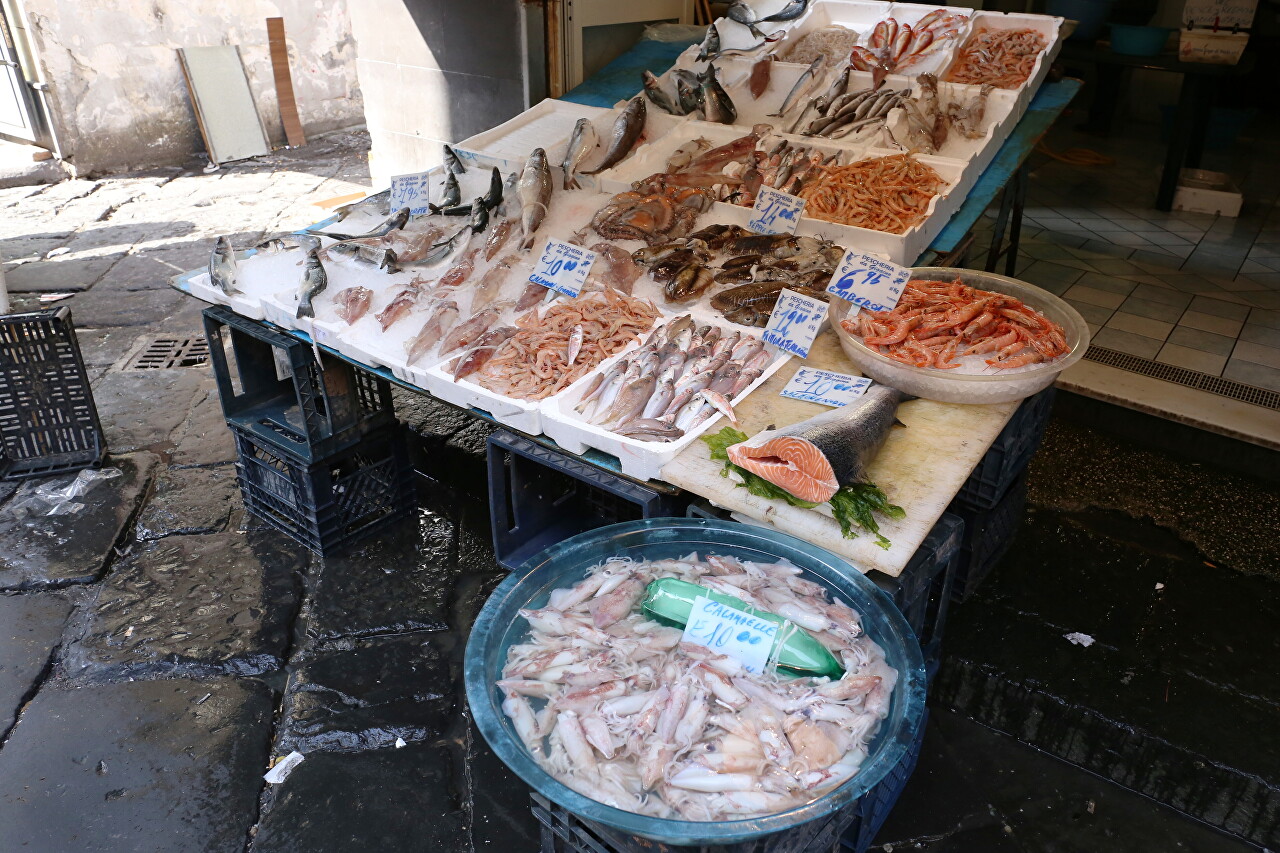
From the mass of names: acicidi, sauri, cefaci, cozze, luvari, cacamari, orate, lacerti, I understood only sarde. Prices for fish have a wide range-from 1 to 10 euros per kilogram.
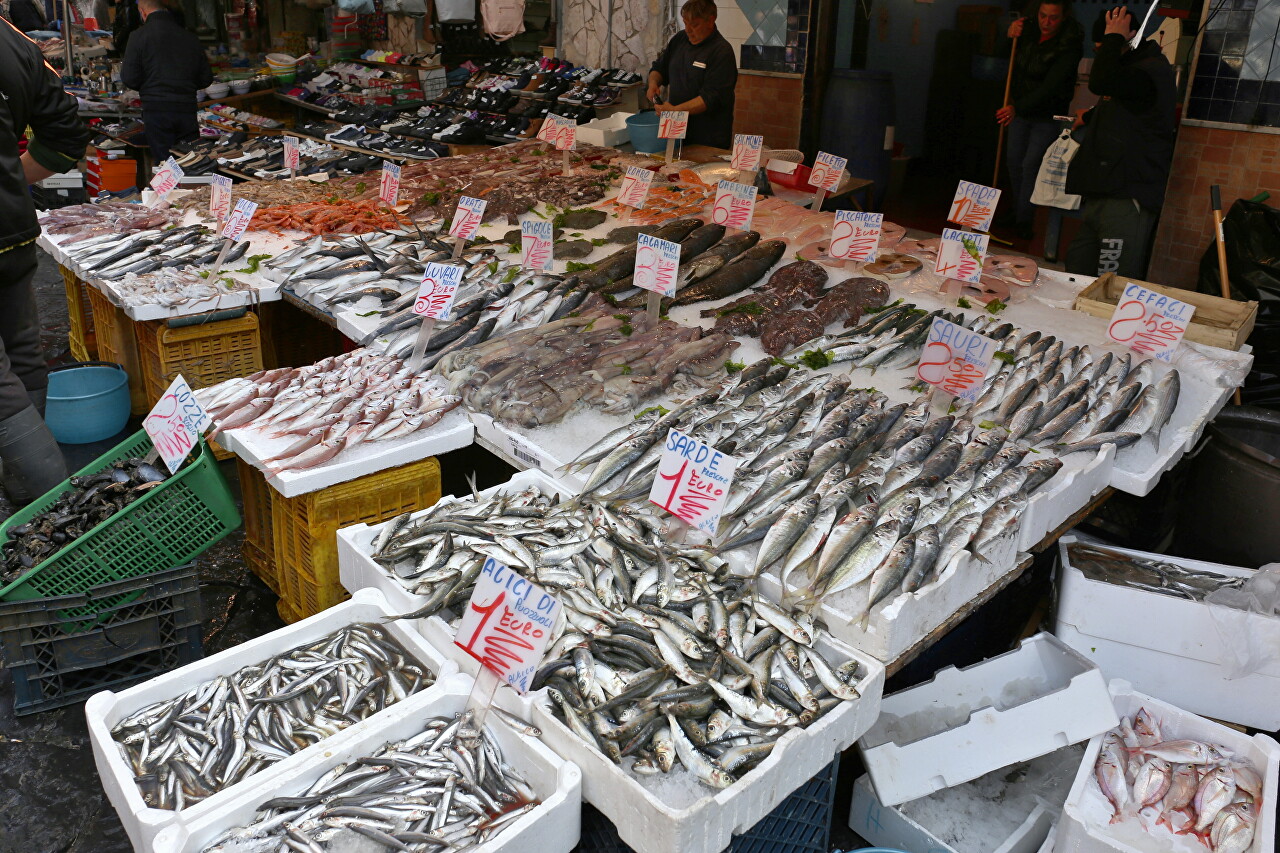
Mussels, a wide variety of crustaceans, squid, octopus. The goods on the trays are irrigated with water, which helps to preserve their freshness.

It says Serpie, but it doesn't look like a serpia fish at all.
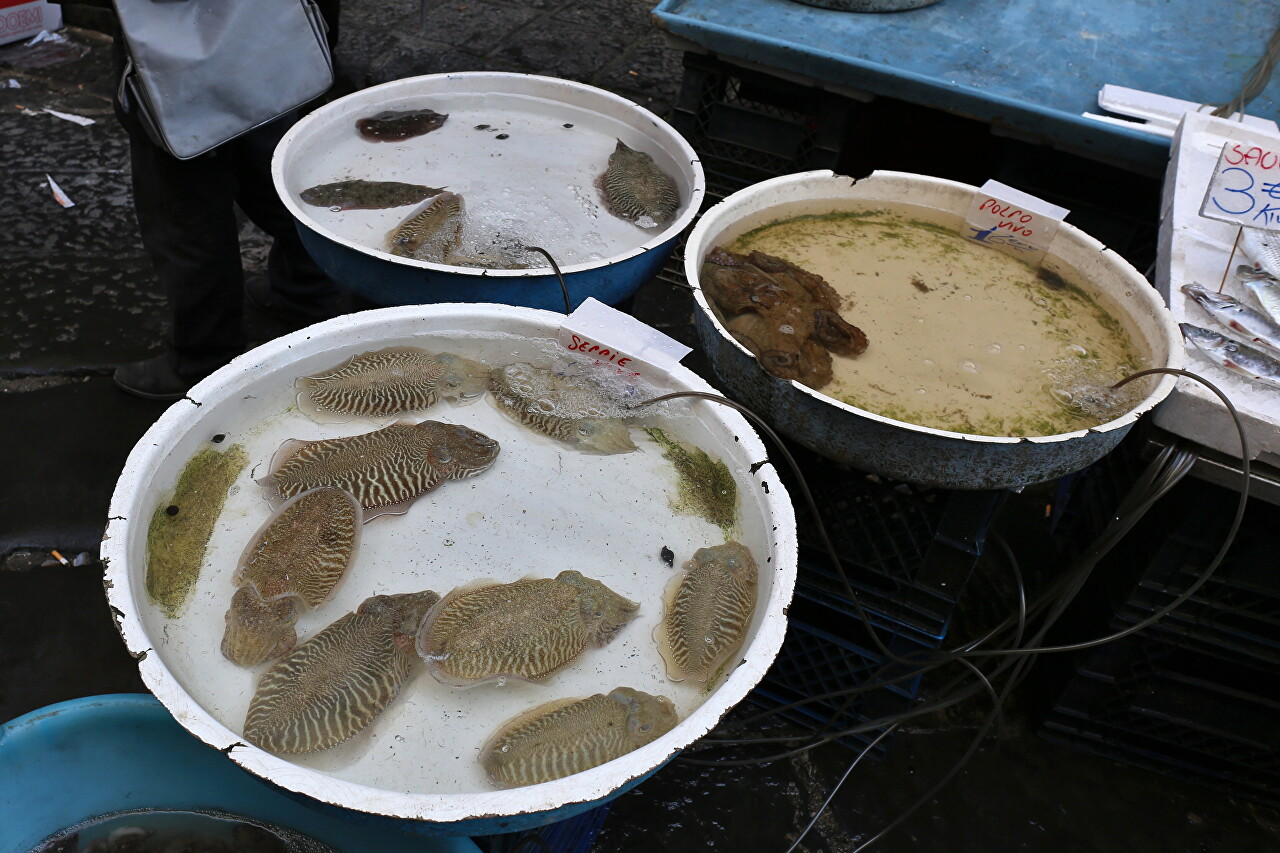
A huge selection of clam shells of all sizes and colors.
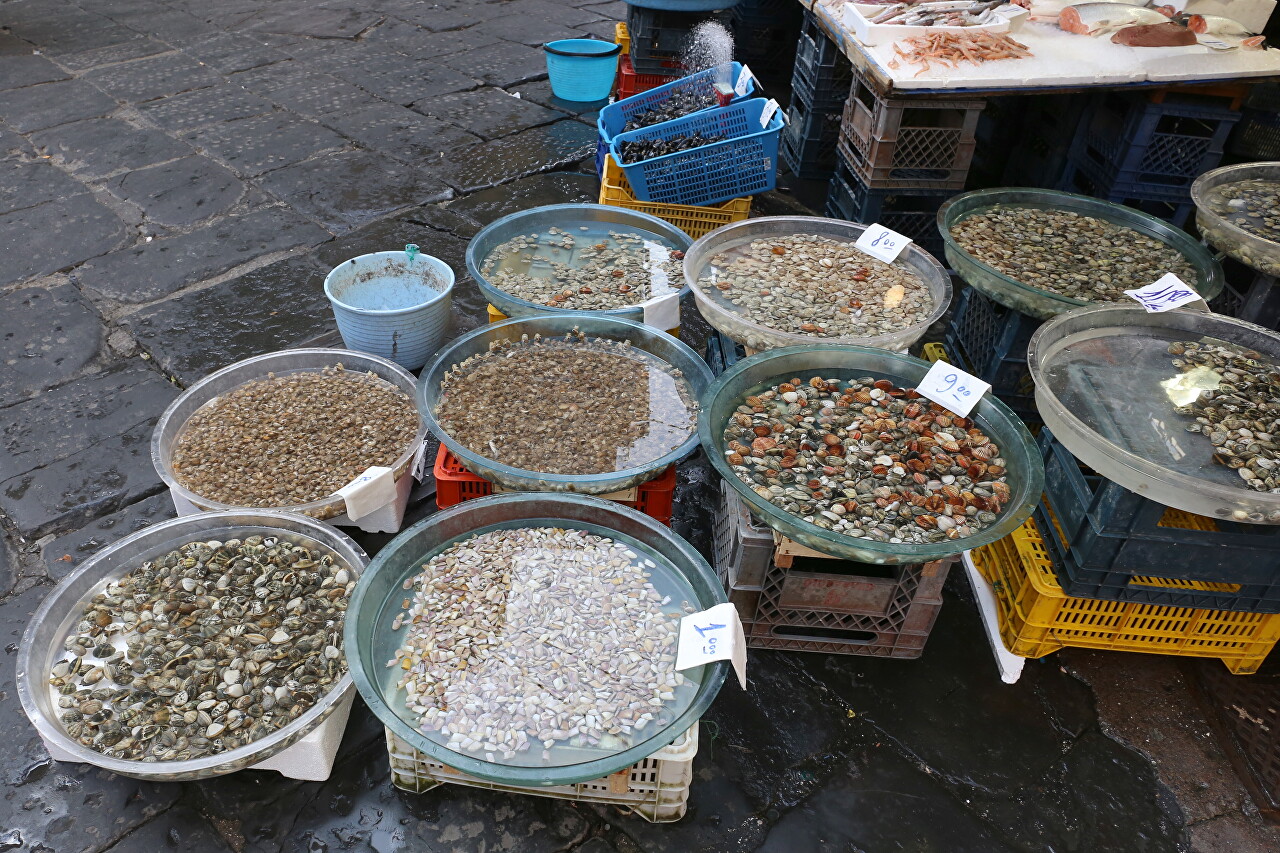
The product advertises by voice - here and there you can hear loud shouts-Prego! Prego! (Please!).
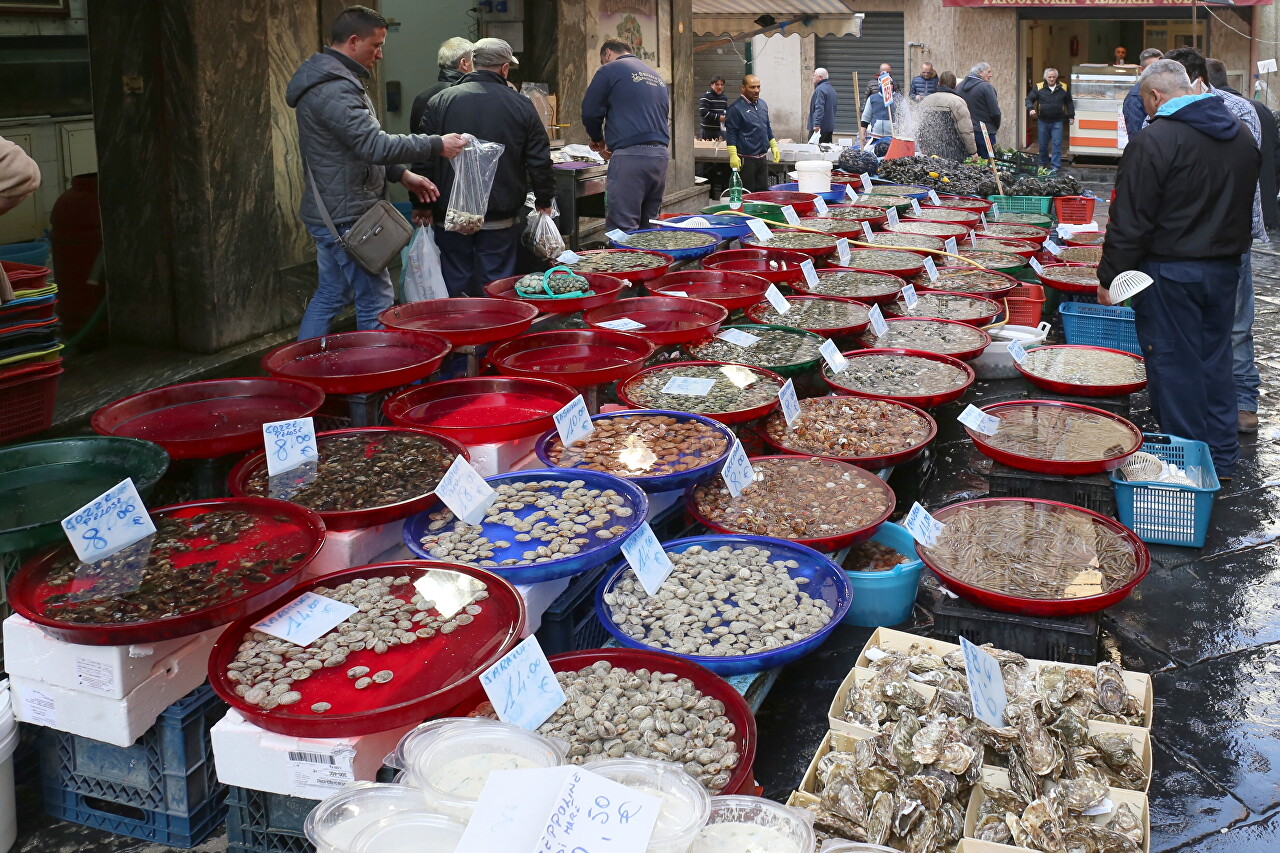
Agricultural products delight the eye with juicy freshness and attractive prices. Of course, strawberries for 3 euros do not impress compared to the prices of this product in Malaga, Spain, but this is quite a budget for Italy, where products are relatively expensive, especially in tourist places.
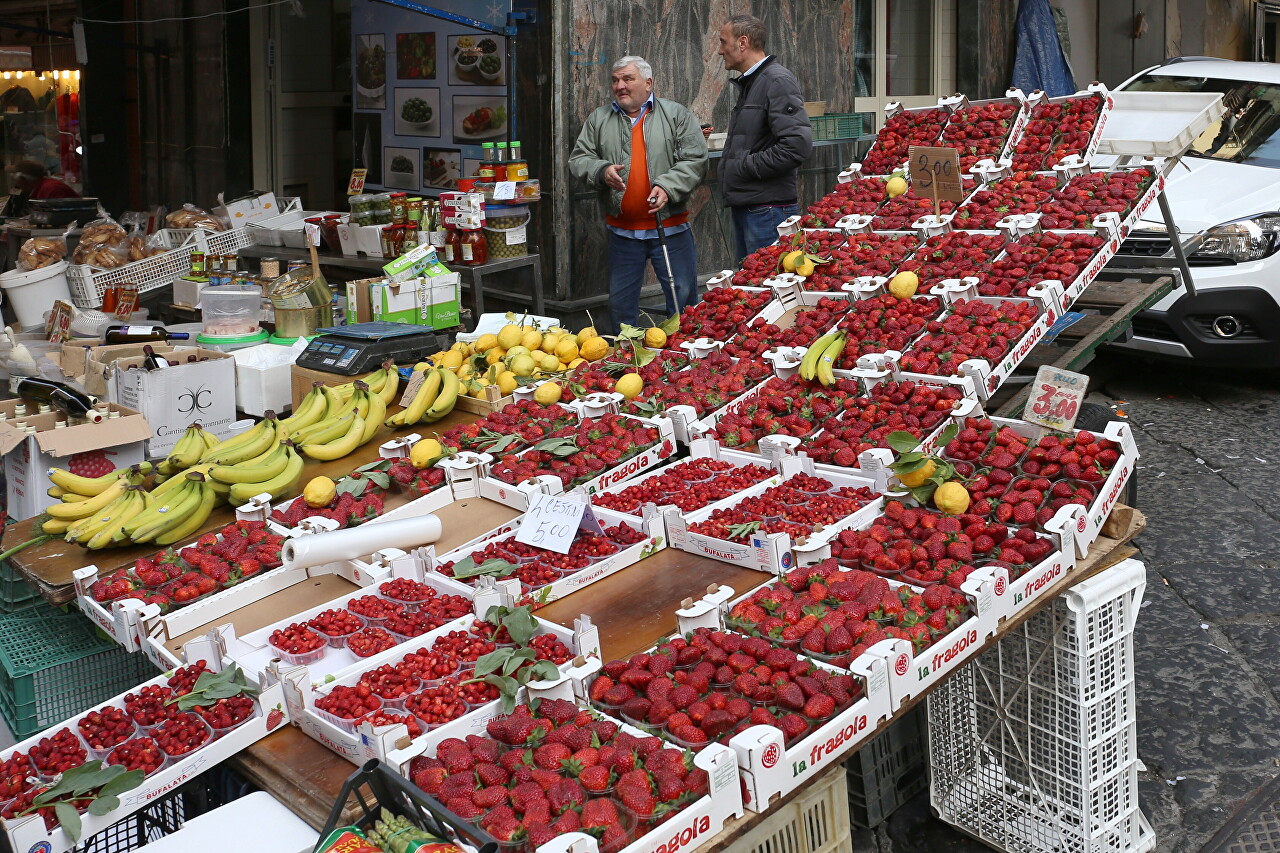
Prices are noticeably lower even than in budget supermarkets, contrary to the assurances of "experts in Italy" on various tourist Internet portals that there "everything is more expensive in the markets".
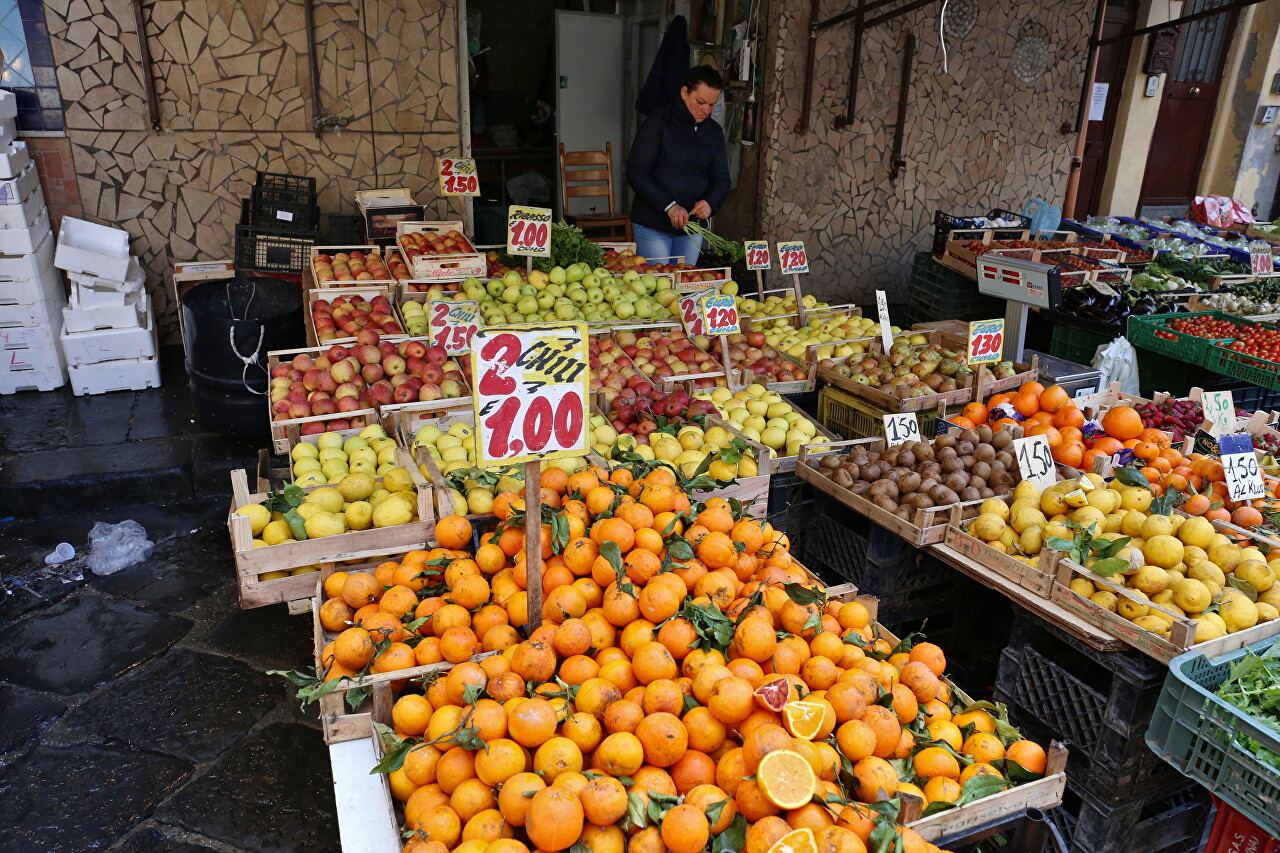
Trays with seafood are interspersed with consumer goods, which are displayed from "stationary" shops. Here you can buy absolutely everything, from dishes to electronics. In one such shop (at the Pakistanis') I finally bought a normal battery for my ancient Nokia for 6 euros. The salesman went to the basement for it, but, surprisingly, it turned out to be the current year of manufacture. We have such five-year-old freshness and hopelessly discharged sell twice as much.
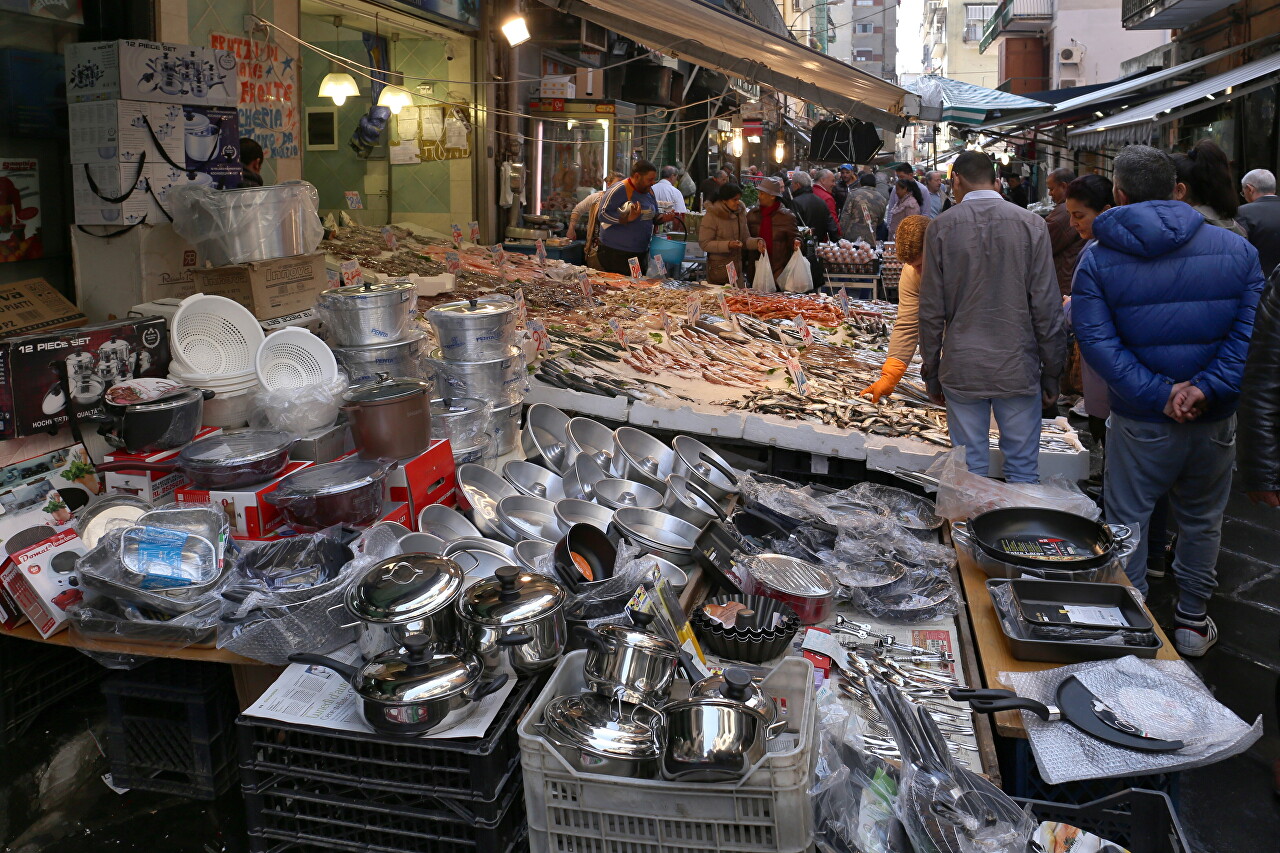
Home-made wine for "L'una Euro", fresh pastries, juices, cookies, chocolate-and all this is cheaper than an economy class supermarket. We can only wonder how small merchants manage to compete with the networks. "Non-branded" cigarettes are sold briskly from the stands at 3-3.50 euros (official prices are twice as high). By appearance, tobacco produced in the Balkan countries. Such trays are quickly installed, goods are quickly laid out, just as quickly disassembled, and the merchant moves to another place. Obvious contraband, so I didn't dare take a picture of the tobacco mafia.
